
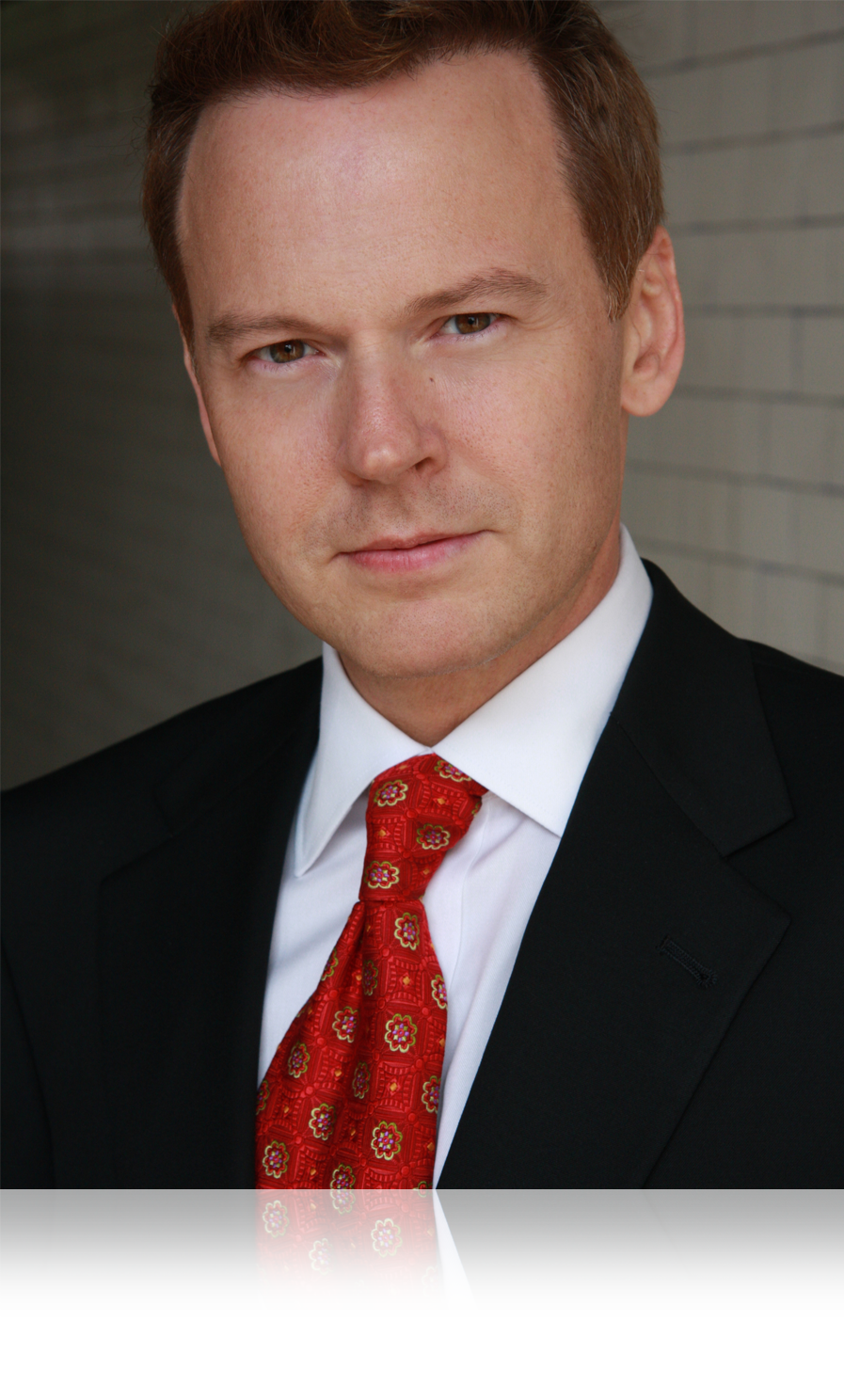
DR Andrew j. HAYDUKE
A facelift, or cervicofacial rhytidectomy, is a surgical procedure that improves visible signs of aging in the face and neck. Facelift surgery is one of the most common and favorite facial cosmetic procedures of Dr. Hayduke’s practice and one of the main reasons Dr. Hayduke has an office location in the Palm Springs area. Being largely a retirement community, facelift surgery is quite common in the greater Palm Springs area. Dr Hayduke’s background in art and sculpture provides a strong and natural foundation for his facial esthetic surgery work.
Once we reach our late 40’s, aging changes in our face and neck start to become apparent, albeit it at different rates among individuals. These changes may include:
The loss of youthful contours in the face and neck are due to a variety of factors, including heredity, gravity, age, diet, smoking, environmental conditions, and even stress. Most patients show aging changes of the entire face and neck. In rare cases, however, a lift of only the neck (NECKLIFT) or only the midface (MIDFACE LIFT) is satisfactory to achieve facial rejuvenation.
Additional rejuvenation procedures typically performed together with a facelift include a BROW LIFT to correct a sagging or deeply furrowed eyebrow region, EYELID SURGERY to rejuvenate aging eyelids, and a CHIN IMPLANT that helps create a better defined and youthful jawline/profile (for those with a weak chin).
As a restorative cosmetic surgery, a facelift does not change your fundamental appearance and cannot stop the aging process. What it can do, however, is set a person’s “aging clock” back several years.
A true facelift can only be performed surgically. Non-surgical rejuvenation treatments cannot achieve the same level of results as a true facelift (in the hands of a skilled surgeon) and consumers should be suspect of flashy ads claiming facelift results by non-surgical means. Non-surgical treatments usually only cost a few thousand dollars, but the results themselves and the amount of time the results actually last usually do not even justify the relatively low cost. One should seriously consider saving that money toward a true facelift by a skilled facelift surgeon. Although patients love to see flashy ads for “non-surgical” means of attaining a facelift result (with “no down time”), we caution you against them.
In general, good candidates for a facelift include:
Facelift surgery involves many choices. Finding a skilled and credentialed facelift surgeon is exceptionally difficult. Since insurance does not cover facelift surgery, many types of surgeons from different specialties (dermatology, ear nose throat, otolaryngology, general surgery, oral and maxillofacial surgery) will try to capture you as a facelift patient.
Please take the time to visit this link to an interesting online article from The New York Times entitled “Ear Doctors Performing Face-Lifts? It Happens” by Kate Murphy.
We feel that the first and most important recommendation is selecting a true formally trained plastic surgeon who is board certified by the American Board of Plastic Surgery (ABPS) and a member in good standing of the American Society of Plastic Surgeons (ASPS).
ASPS member surgeons must meet rigorous standards which include:
Once you independently confirm that your surgeon meets the above criteria, then at least you know you are considering a formally trained plastic surgeon as your facelift surgeon. That is a great and prudent first step. This does not guarantee, however, that your plastic surgeon actually posses the sense of artistry and past surgical work that agrees with your own esthetic goals.
The The American Board of Plastic Surgery (ABPS) is recognized by the American Board of Medical Specialties (ABMS), which has approved medical specialty boards since 1934. There is no ABMS recognized certifying board with “cosmetic surgery” in its name.
By choosing a member of the American Society of Plastic Surgeons, you can be assured that you are choosing a qualified, highly trained plastic surgeon who is board-certified by the ABPS or The Royal College of Physicians and Surgeons of Canada.
Although it is hard to believe, in the State of California, your surgeon does not need to be board certified by the ABPS in order to perform facelift surgery. Board certification is not required. Any licensed medical doctor (M.D) or D.O. (Doctor of Osteopathy) from any specialty can legally perform this procedure as long as a patient signs the consent form for the procedure. It is left up to the patient to actually double check if their surgeon is actually board certified by the ABPS by visiting www.abplsurg.org and clicking/tapping on the “is your surgeon certified” tab. It is very easy to be confused by other official sounding boards and certifications posted on ads and websites. To find if your potential surgeon holds any board certification in any specialty, you can also visit www.certificationmatters.org and find out which SPECIFIC board certification (if any) your potential surgeon actually holds. We highly suggest you choose a surgeon board certified by The American Board of Plastic Surgery if you are thinking of having PLASTIC SURGERY – it only makes sense.
Once you are assured that your potential surgeons meets this very important standard, then you can determine if they are truly the right facelift surgeon based on your personal consultation with the doctor and a review of the doctor’s past facelift work.
It is equally important to evaluate exactly where will your surgery take place (facility location) and who will be administering the anesthesia for your facelift. Insist upon an anesthesiologist (doctor) who is certified or eligible by The American Board of Anesthesiology. Even if the procedure is not done under general anesthesia, make sure the facility itself has the ability (and accreditation) to convert to general anesthesia if airway problems arise during the case. Many accredited office surgical suites only offer “intravenous sedation” because they do not actually have the expensive general anesthesia machines and equipment available at the facility. They are not actually accredited for general anesthesia, but rather only posses accreditation for “intravenous sedation”.
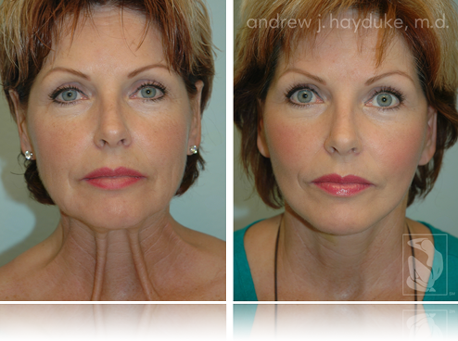
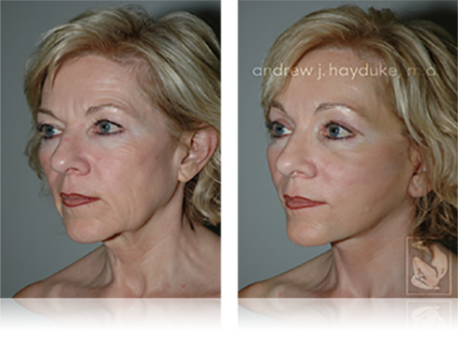
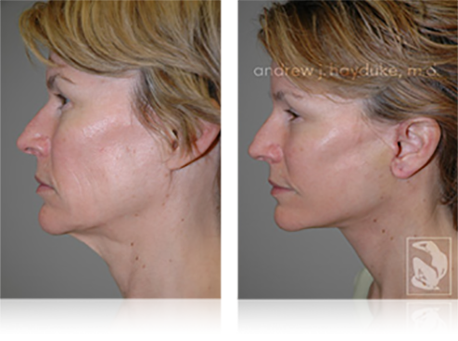
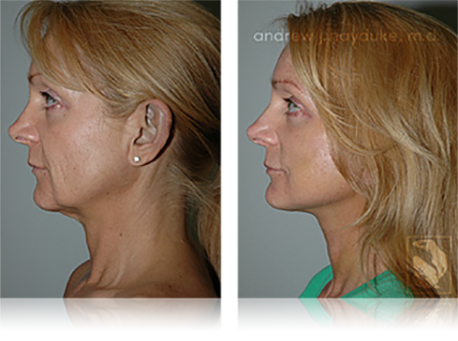
Visit Dr Hayduke’s portfolio page to see more before and after photos.